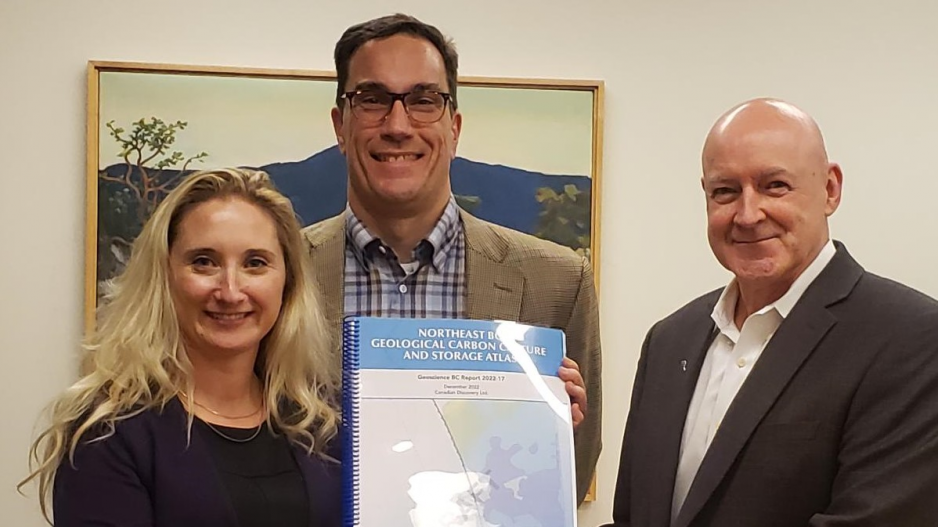Northeastern B.C. has the potential to sequester more than 4,000 megatonnes of CO2, says Geoscience BC.
Geoscience BC has developed an “atlas” that maps the geological sequestration potential in exhausted oil and gas wells in Northeastern B.C.
The atlas was based on research by Canadian Discovery Ltd., in partnership with the BC Hydrogen Office, the Centre for Innovation and Clean Energy (CICE) and Geoscience BC.
“According to the research, there is significant potential for carbon dioxide storage in depleted pools north and northeast of Fort St. John and in the far northeast of B.C.,” Geoscience BC says in a news release. “There is also significant carbon dioxide storage potential in deep saline aquifers in the Dawson Creek and Fort St. John area, and south of Fort Nelson.”
The total storage potential is estimated at 4,230 megatonnes (MT). To put that in perspective, B.C.’s total GHG emissions in 2020 was 63.5 MT.
“Carbon capture and storage could be a new industry in British Columbia on the lands of Treaty 8 First Nations,” said Justin Napoleon, chief of the Saulteau First Nations: “By informing Indigenous communities and sharing the research at an early stage, we can make more informed decisions about our involvement in this sector and about our future.”
“With our clean electricity, abundant natural resources and innovative companies, B.C. can be a world leader in the growing carbon capture and storage sector,” said Josie Osborne, B.C.’s new minister of Energy, Mines and Low Carbon Innovation.
One potential use of carbon sequestration in B.C. could be in the production of blue hydrogen, which is hydrogen produced from natural gas with the emissions abated through carbon capture and storage.
A technical information session on the new atlas will be held February 23. Industry participants can register here.




